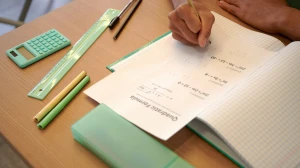The length of a Rectangle is Halved, while its Breadth is Tripled. What is the percentage change in Area?
by
Updated Jun 24, 2024

The length of a Rectangle is Halved, while its Breadth is Tripled. What is the percentage change in Area?
When the length of a rectangle is halved while its breadth is tripled, there are specific mathematical implications that can be explained as follows:
Let's denote the original length of the rectangle as x and the original breadth as y. The initial area of the rectangle is given by the product of its length and breadth, which is x × y
After halving the length and tripling the breadth, the new length becomes x/2 and the new breadth becomes 3y.
The new area of the rectangle is then calculated as (x/2) × 3y
which simplifies to (3/2)xy
To find the change in area, we subtract the original area from the new area
Change in area = ((3/2)xy) - xy = xy/2
Finally, to calculate the percentage change in area, we divide the change in area by the original area and multiply by 100 to get the percentage
Percentage change = (xy/2/xy) x 100%
Simplifying further, the xy terms cancels, leaving us with
1/2 x 100% = 50%
Therefore, the percentage change in area when the length of a rectangle is halved while its breadth is tripled is a 50% increase.
Dimension Changes Impact on Rectangle
In mathematics, we often explore how changing the dimensions of shapes affects their properties. One common scenario involves rectangles, where we may halve the length and triple the breadth, or vice versa, to see how it impacts the area or other characteristics of the shape.
Area Calculation:
The area of a rectangle is calculated by multiplying its length and breadth. When we alter these dimensions, such as halving the length and tripling the breadth, it directly influences the resulting area of the rectangle.
Percentage Change Analysis:
By comparing the original area of the rectangle with the area after the dimensions are changed, mathematicians can determine the percentage change in area. This analysis helps in understanding the proportional increase or decrease in the shape's size due to the dimension adjustments.
Educational Purposes:
In educational settings, exploring such dimension changes in rectangles serves as a foundational exercise in geometry and algebra. It helps students grasp fundamental concepts of shape transformations, equations, and percentage calculations.
Solving Skills:
Working with these mathematical scenarios sharpens problem-solving skills. Students learn to analyze situations, apply mathematical formulas and principles, and draw conclusions about how changes in one aspect affect another within a mathematical framework.
Applications:
These concepts extend beyond theoretical maths and find practical applications in various fields. For instance, in engineering and construction, understanding how changes in dimensions impact areas helps in designing structures, calculating material requirements, and optimizing space utilization.




